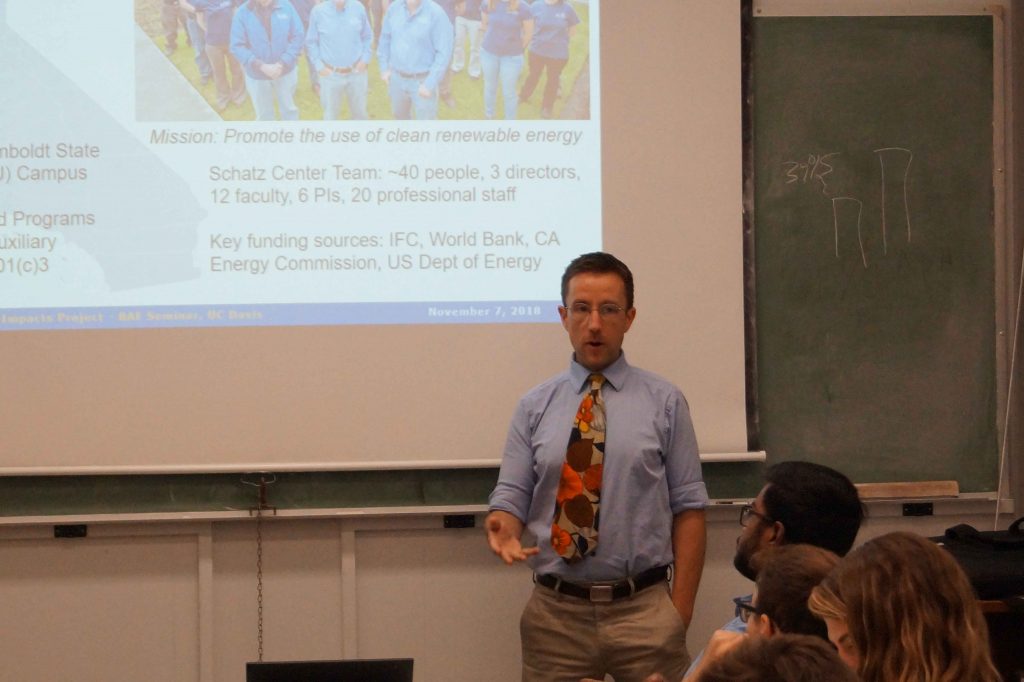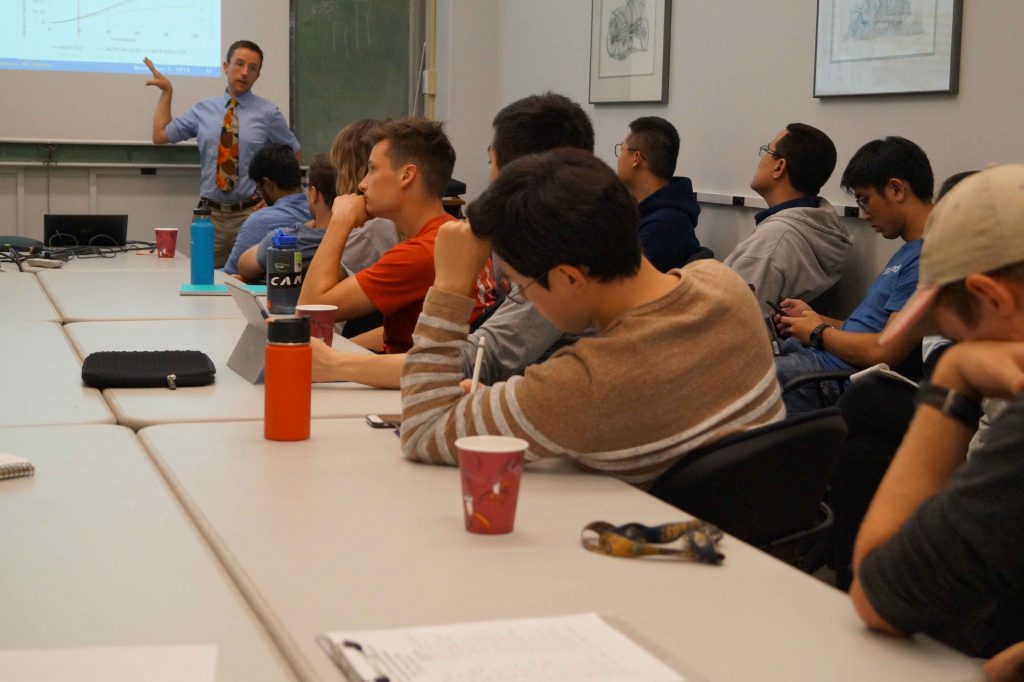
Jerome Carman Talks About California’s Forests
The quantity and aggressiveness of the recent fires in California’s forests leaves little doubt that more serious attention should be paid to the forests in order to better understand them and their carbon cycle. But after a century of forest management that has contributed to the problem instead of helping fix it, thorough analyses of forests are necessary going forward. 
During the Department of Biological and Agricultural Engineering’s latest Fall Quarter Seminar, Jerome Carman, Senior Research Engineer for the Schatz Energy Research Center, discussed the research and methodologies the California Biopower Impact (CBI) Project is taking to contribute to the solution. The three-year project is funded by a $1,000,000 grant from the California Energy Commission and led by Dr. Kevin Fingerman of the Humboldt State Univeristy College of Natural Resources and Sciences who is a faculty research associate with the Schatz Center.
“We are modeling the climate change impact of the utilization of forest residues for electricity generation in a way that de-couples the impact from the complexity of the broader forest carbon cycle,” said Mr. Carman as he discussed the projects goals.
 The CBI Project is taking an in-depth look at the environmental performance of bioenergy from forest residues including, but not limited to, detailed and spatially explicitly modeling of decay and combustion pathways, transparent accounting of the time profile of emissions sources, and an “emissions scenario” approach to calculating global warming and global temperature potential impact indicators. The methods being developed will enable the project team to conduct a rigorous impact sensitivity analysis that will inform policy recommendations to California decision makers.
The CBI Project is taking an in-depth look at the environmental performance of bioenergy from forest residues including, but not limited to, detailed and spatially explicitly modeling of decay and combustion pathways, transparent accounting of the time profile of emissions sources, and an “emissions scenario” approach to calculating global warming and global temperature potential impact indicators. The methods being developed will enable the project team to conduct a rigorous impact sensitivity analysis that will inform policy recommendations to California decision makers.
The CBI Project is motivated in part by two factors: aggressive renewable energy targets and unprecedented tree mortality. After a century of fire suppression activities that have left California’s forests with an abundance of biomass coupled with tree mortality caused by drought and bark beetles, forest residues have the potential to help address thees two imperatives, according to Mr. Carman.
One of the goals of the CBI Project is to support policy makers and industry moving forward so they can make informed decisions about the utilization of biomass within California’s forests. To assist with this, the project team is developing the California Biomass Residue Emissions Characterization (C-BREC) Framework and Tool. A beta version is slated for deployment sometime next year.
Next week’s seminar will feature the transition from graduating with a master’s of science Biological Systems Engineering to working with the U.S. Army Corps of Engineers. Jennifer Payne-Strimaitis the Synchronization and Initiatives Group (SIG) will explain how she made the transition and why the Corps of Engineers is vital to the nation.
